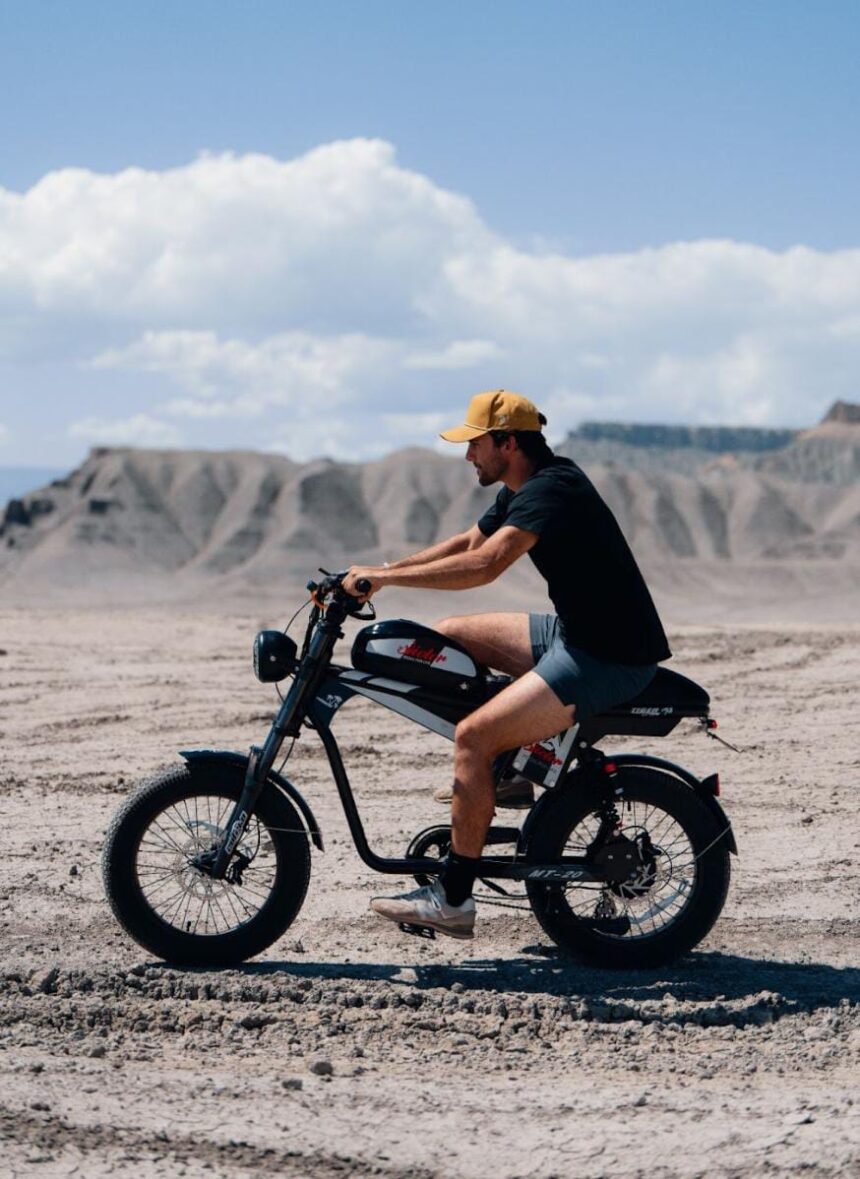E-bikes are quickly becoming the go-to choice for city riders, offering a faster, easier, and greener way to get around. But if you live in a city full of steep streets and long climbs, you’ll need more than just a standard e-bike.
Hills demand extra power, smart gearing, and a strong battery to keep you moving without draining your energy.
In this guide, we’ll break down why e-bikes are perfect for hilly cities, the key features you should look for, and simple tips that will help you ride with confidence no matter how steep the road gets.
Why E-Bikes Are Perfect for Hilly Cities
E-bikes shine in cities with tough climbs because their motors give you the extra boost needed to take on steep streets. Instead of struggling up a hill or arriving at work drenched in sweat, pedal assist lets you ride smoothly while still getting a workout.
They also make cycling more inclusive. Older adults, beginners, and commuters carrying loads can enjoy biking in cities like San Francisco, Seattle, or Lisbon, where the terrain can be intimidating without motor support.
“E-bikes remove the biggest barrier to city cycling hills. With the right setup, you’ll glide up climbs that once felt impossible,” says Al Amin Morshed, founder of BoltBikers.
Key Features to Look for in a Hill-Climbing E-Bike
Not all e-bikes handle hills the same way. If you’re riding in a city with lots of inclines, here are the features that matter most.
Motor Power and Torque
When it comes to hills, torque is more important than raw wattage. Torque measures how much rotational force the motor delivers, which directly impacts your ability to climb steep grades.
A 250W motor with high torque can outperform a higher wattage motor with weaker torque when tackling climbs. Look for e-bikes that provide at least 60Nm of torque or higher if your city has long or very steep hills.
Mid-Drive vs. Hub Motors
Mid-drive motors are generally the better choice for climbing. They power the bike through the drivetrain, which allows them to use the bike’s gears for more efficient climbing. This translates into stronger hill performance and better balance, especially on steep inclines.
Hub motors, while simpler and cheaper, can struggle on longer or steeper hills because they don’t benefit from gear ratios. If hill climbing is your main concern, mid-drive is worth the investment.
Battery Capacity and Range
Hilly riding drains your battery faster, so capacity matters. A 500Wh battery may be fine for flat commutes, but for cities with steep streets, a 600–750Wh battery gives you more confidence.
Range also depends on assist level and riding style; using higher pedal assist on every climb will shorten battery life. Riders should plan their routes and charging stops carefully if they face frequent hills.
Gears and Pedal Assist Levels
Having multiple gears and adjustable pedal assist makes a huge difference in how you tackle hills. Downshifting before a climb reduces strain on both you and the motor, while higher pedal assist settings provide the extra push when you need it most.
Bikes with multiple assist levels allow you to balance battery usage with performance, making climbs smoother and extending your riding range.
If you’re considering your options, check out this guide to the best e-bikes for hills to see which models are built for steep city riding.
Tips for Riding an E-Bike on Hills Safely and Comfortably
Riding uphill doesn’t have to be stressful. With the right habits, you can climb smoothly and save energy.
- Shift before the climb – Downshift to an easier gear before you start going uphill so you don’t strain the motor or your knees.
- Use pedal assist wisely – Increase assistance when the slope gets steep, but switch back to a lower level once you reach the top to save battery.
- Maintain steady speed – Avoid sudden bursts of power; keeping a consistent pace makes climbs more efficient.
- Lean forward slightly – Shifting your weight forward improves traction on steep grades.
- Plan your routes – If possible, choose roads with gradual inclines instead of sudden, steep climbs to make the ride easier.
Common Mistakes New Riders Make in Hilly Cities
Many beginners struggle with hills because they don’t use their e-bikes to their full potential.
- Relying only on the throttle – This drains the battery quickly and puts extra strain on the motor.
- Forgetting to downshift – Staying in a high gear on a climb makes the bike feel heavier and harder to control.
- Overestimating battery life – Hills use more energy, so always plan for extra battery use on your rides.
- Braking too late on descents – Waiting until the last second can wear out your brakes and reduce control.
- Skipping warm-ups – Jumping straight into a steep climb without easing into the ride can cause fatigue faster.
Maintenance Tips for E-Bikes in Hilly Areas
Riding in a city with lots of elevation puts extra wear on your bike, so regular upkeep is important.
- Check your brakes often – Steep descents wear pads faster, so inspect and replace them more frequently.
- Monitor your battery health – Hills drain energy quickly; avoid running the battery to empty after heavy climbs.
- Inspect the chain and drivetrain – Climbing adds extra stress, so keep the chain clean and lubricated.
- Keep tires properly inflated – Low pressure reduces efficiency and makes uphill rides harder.
- Schedule regular tune-ups – A quick service check ensures your motor, gears, and sensors are working properly.
Who Should Consider an E-Bike for Hills?
E-bikes built for hills aren’t just for hardcore riders. They’re a smart choice for anyone who faces steep terrain in their daily rides.
For commuters in cities like San Francisco or Seattle, an e-bike makes daily travel faster and less exhausting. Instead of arriving at the office sweaty or tired, pedal assist keeps the ride comfortable while still giving you exercise.
They’re also a great option for older riders or anyone who wants to keep cycling without worrying about fitness limitations. The motor support makes hills feel manageable, opening up routes that might otherwise be avoided.
Even casual riders benefit. If your city has a mix of flat and hilly streets, choosing an e-bike designed for climbs ensures every trip is enjoyable, not stressful. Add in the savings on fuel and parking, and it’s easy to see why more riders are making the switch.
Conclusion
Riding an e-bike in a hilly city doesn’t have to feel overwhelming. With the right motor, gears, and battery capacity, you can take on steep climbs with ease and enjoy smoother, more comfortable rides.
Learning how to shift early, use pedal assist wisely, and care for your bike will make a big difference in both performance and battery life.
Whether you’re commuting to work, staying active, or simply exploring your city, an e-bike built for hills opens up routes that once felt off-limits.
For beginners, it’s a simple way to make cycling fun and practical, even in cities known for their steep streets. With the right choice, hills won’t slow you down; they’ll just be part of the adventure.


